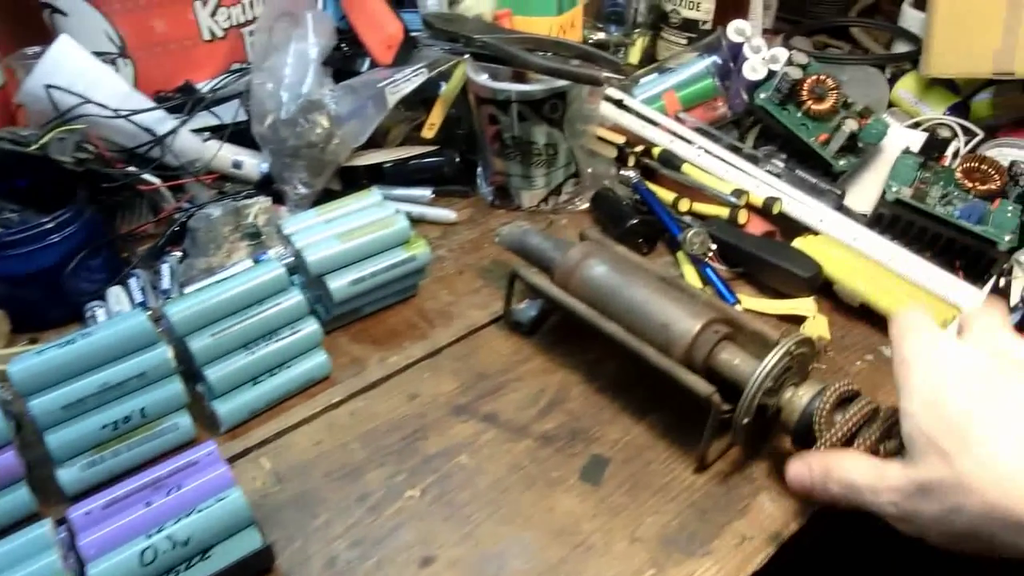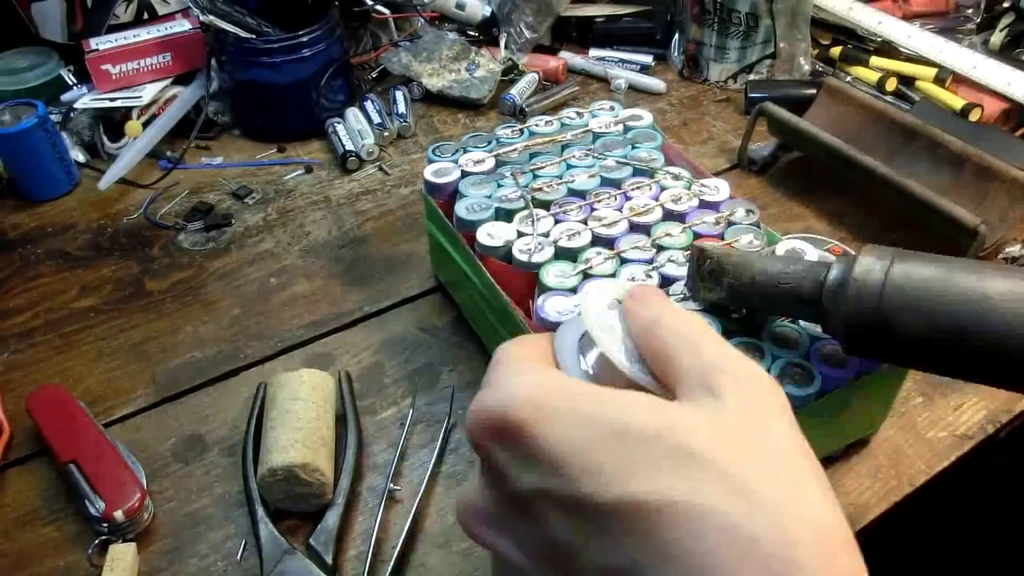Say from 30Q’s or 25R’s?
This got me to thinking…
Say from 30Q’s or 25R’s?
This got me to thinking…
I've built some smaller battery packs (2S3P with a balance charge connector) for my friend's RC truck, but I'd say that without proper spot welding equipment soldering that many cells together is difficult and potentially dangerous.
It is definitely doable, but if you don't know what you're doing the potential for injury is high.
check out bike forums, many people there built their own batteries, some even from laptop pulls, and some solder them, i have tried soldering cells from laptops before, but heat from soldering killed like half of them, never had one explode, or vent, they just quietly die.
but i agree with RMM, you need spot welder for tabs, there are few “how to build” them topicks on the web, using microwave oven transformer.
soldering damages them, some people on those forums claim they know how to solder and not to kill a battery, may be they do, but i think, they still desroy some, they just do not know it since they have several in parallel, so they would not know if 1 or 2 in that parrallel string is dead.
but with spot welder, and understanding what you doing, it is not that complicated to build your own battery.
The secret to soldering a cell is not heating the inside of the cell to the point it damages it.
A spot welding machine heats up the tab and the case of the cell at the point of contact to the point that the metals actually melt and are welded together. That temperature is much higher than the temperature it takes to melt solder. The reason that works and does not damage the cell is because that increase in temperature is localized in a very small place, a “spot”
It is done over a very short period of time so that not much heat is applied. That localized heat at the point of the weld dissipates by the time it reaches the inner parts of the cell so damage occurs.
What can cause damage is trying to use a small, low wattage soldering iron. The tip not being massive will cool down as soon as contact is made with the cell and a lot of heat is poured into the cell while the iron is in contact with the cell for a good length of time.
The way to solder a cell may seem counter intuitive to some, but a very large, massive, iron should be used so that the solder joint can be done in a second or two. In that way LESS heat will enter the cell and it will not be damaged.
In both cases, spot welding and soldering, it must be done QUICKLY.
He does some things that I wouldn’t do but look at the size of the iron this guy uses.


interesting!
I’ve seen some e-bikes lately, and I’ve wondered if you could mod a bike to an e-bike somewhat cheaply by DIY, but i haven’t done any research or further thinking…
Mentioned in that link but Endless Spheres has everything you want from packs to balance chargers and sources for suitable batteries.
This looks like a really clever little DIY spotwelder too.
I would like to do this some time in the future too, and have been looking at the LiFePO4 18650’s for just the reason of more safety. Tradeoff is in capacity of course, but some of the A123 cells are reputed to be able to discharge at 50C… Turbo mode on two wheels…. And on a bicycle, twice the cells are as easy to carry as a spare battery for your EDC light… it is moving itself after all…
Check out a battery shop or a laptop battery rebuilder, they should have a spot welder. The Weller soldering iron I used probably is the lowest you can get away with in terms of power or thermal capacity.
If you must use a soldering iron, apply a dab of flux, tin the top and bottom, and make sure you spend as little time as possible heating the cells up.
i really prefer to get a blob of solder that’s just about to drip from the tip of the soldering iron, and just touch that to the battery with flux on it… happens near instantaneously.
I am unsure if it is worth all the work…
For example this ready built pack 365$
http://lunacycle.com/48v-samsung-inr18650-25r-12-5ah-high-power/
It contains 60 25r cells and a BMS
So if you buy the cell for 5$ it would cost 300$ alone for the batts. BMS, spot weldings, shrink and metal stripes and a lot of work will easily be worth 65$…
Julian Ilett has upgraded his bike to LiFePo4: https://www.youtube.com/user/julius256/search?query=Julian's+Project%3A+Electric+Bike+Upgrade+to+LiFePO4